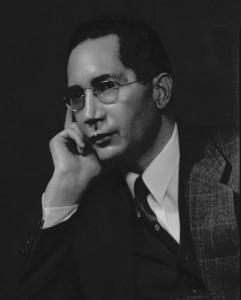 Poet, critic and writer, Sterling A Brown was born in Washington in 1901 and was one of the foremost voices of African-American literature in the 20th Century as well as one of its greatest teachers. His father had been a slave and worked his way to become a minister and professor at Howard University which has played a major role in US history in providing equal educational rights to both African-American students and women.
Poet, critic and writer, Sterling A Brown was born in Washington in 1901 and was one of the foremost voices of African-American literature in the 20th Century as well as one of its greatest teachers. His father had been a slave and worked his way to become a minister and professor at Howard University which has played a major role in US history in providing equal educational rights to both African-American students and women.
Brown spent much of his youth on a farm in Tennessee and he went to school at Dunbar where he came top of the class. That gave him the chance of a scholarship to head on to Williams College which eventually led him to Harvard and an MA. From an early age his poetry was attracted to the rhythms of jazz and the blues. He learned from poets such as Ezra Pound but his real influences were the music and poetry of Langston Hughes and Countee Cullen. He would later teach his students that the music of the words was just as important as the words themselves.
From an early age, Brown’s poetry was understandably concerned with the plight of black Americans. He published his first collection of poetry in 1932 at the age of 31. Southern Roads wasn’t a rail against the establishment, as some others had attempted, but gave a poise and sense of dignity to black people in the country. It was unusual for the day in that it also provided a contemporary dialect and structure to the black-American voice and brought across the cadence of the music of the time.

Brown married Daisy Turnbull in 1927 and she was the source of a number of his poems including Against That Day. For a while he taught at Lincoln University before going back to Howard where he was a teacher for the next 40 years and during that time studied black-American folklore and wrote a number of articles, essays and books on the subject.
Brown was often criticized in the early years for being too middle class but, unlike many of his contemporaries, he focused on the real black folklore that existed in the American South at the time. He was greatly influenced by poets such as Sandburg and Robert Frost and was finally recognized as the Dean of American Negro Poets for the way that he honestly portrayed blacks in America.
In 1941 he helped edit the book The Negro Caravan that explored the depiction of black people in literature. He also wrote the essay The Negro in American Fiction in 1937. He didn’t contribute much more poetry in the ensuing years but taught and wrote enough about African-American literature to influence a whole new era of poets and artists such as Toni Morrison and Ossie Davis.

In 1984, Sterling A Brown became the first poet laureate for Columbia and won the Lenore Marshall Poetry Award for his collected poems. Later in life he caught leukemia and, in 1989, at the age of 88 passed away.

